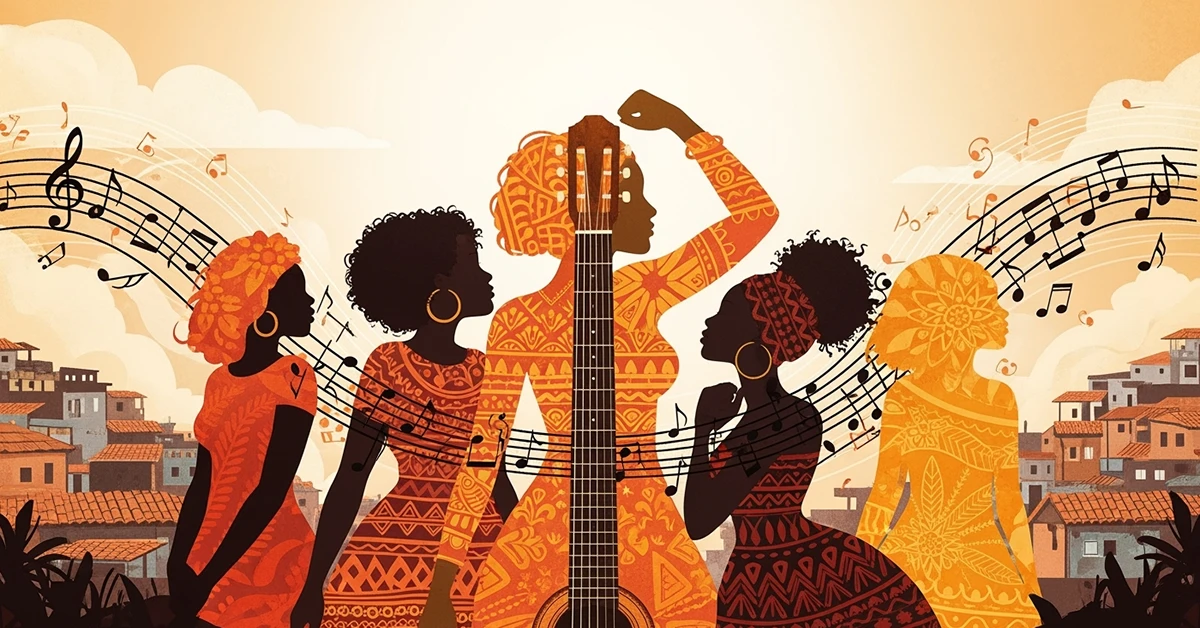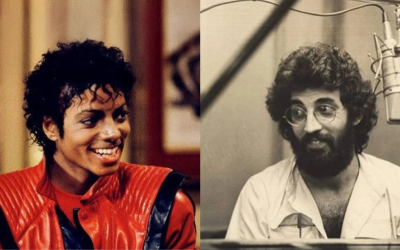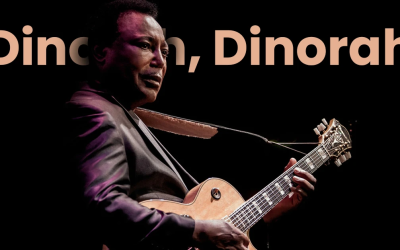What if I told you there’s one Maria Maria Brazilian song that represents the life story of over 60 million women? A song so powerful it became their unofficial anthem? While few songs can truly encapsulate the lives of millions, there’s one in Brazil that has endured for decades among the greatest, one that synthesizes and represents the saga of most Brazilian women.
Today, we’re diving deep into this iconic masterpiece by Milton Nascimento and Fernando Brant, exploring its origins, its profound social commentary, and why it continues to resonate as the ultimate Brazilian women’s anthem.
The Genesis of an Anthem: From Dance to Disc
The story of “Maria, Maria” is as unique as its impact. Unlike many songs born in recording studios, this powerful composition first came to life on stage. In 1976, Milton Nascimento composed the music for a dance performance of the same name, created by Fernando Brant and performed by the renowned Grupo Corpo dance company.
Originally, the piece was purely instrumental, with Milton’s voice carrying the melody with raw emotion. It was a testament to the artistic movement known as Clube da Esquina music, a collective that began in Belo Horizonte in the 1960s and expanded beyond just music into theater, literature, and cinema. This multidisciplinary approach allowed for the birth of a song that transcended traditional boundaries.
The song was later released in 1978 on the second Clube da Esquina album, a landmark record in Brazilian music history. However, something was still missing. The song, with its evocative melody and poignant theme, seemed to cry out for a woman’s voice to truly tell its story. This yearning would soon be answered, cementing its place in the hearts of millions.
Elis Regina: The Voice That Defined a Generation
While Milton Nascimento is undoubtedly one of Brazil’s greatest interpreters, the Maria Maria Brazilian song found its definitive voice in the incomparable Elis Regina. Two years after its album release, in 1980, Elis Regina’s interpretation propelled “Maria, Maria” to national prominence.
It wasn’t merely a technical choice; the song’s narrative demanded a female perspective to fully illustrate its depth. Elis, known for her unparalleled emotional delivery and technical prowess, was the perfect artist to embody the song’s message. Elis Regina interpretation became iconic, transforming the song into a powerful statement.
Her voice, filled with both vulnerability and immense strength, perfectly captured the essence of the Brazilian woman the song sought to represent, solidifying its status as a true Brazilian women’s anthem.
Beyond the Melody: The Story of Maria
“Maria, Maria” is far more than just a beautiful melody; it’s a theatrical work with an engaging narrative that symbolizes the harsh reality faced by thousands of Brazilian women. The play, and subsequently the song, portrays a typically Brazilian story: a Black woman living in extreme poverty, married at fourteen, and widowed shortly after, forced to raise her children amidst unimaginable difficulties.
This narrative, sadly, was and remains common in Brazil. The play premiered in 1976 and achieved great success both in Brazil and Europe. It shed light on the alarming prevalence of child and adolescent marriage, a reality that, shockingly, hasn’t changed much. Brazil ranks sixth globally among countries with the highest number of girls married or in common-law unions, with approximately 2.2 million girls in this situation, representing about 36% of all girls in the country.
Even more concerning, Brazilian law legally accepts the marriage of young people from 16 years old with parental consent, raising critical questions about the protection of basic rights. This is the story of Maria, who, due to the high frequency of her name in Brazil, represents an immense number of women who, as the song’s lyrics point out, deserve to live and love like any other women on the planet. Yet, in reality, their lives and loves are often severely restricted by societal impositions.
A Performance of Race: The Unspoken Truth
The fact that Maria is a woman brought powerful meaning to Elis Regina’s interpretation, but her identity as a Black woman adds another crucial layer to the song’s profound message. In Brazil of 1978, and even today, Maria’s race points to fundamental aspects of her reality and origin.
The abolition of slavery in Brazil, while legally freeing enslaved people, often left them to their own devices, or in conditions analogous to slavery. Freedom on paper did not translate to freedom in life; misery became the reality for most. Black women, in particular, suffered immensely. Used to generate new slaves and subjected to abuse during slavery, they continued to carry this enormous weight even after abolition. This cycle of suffering was not easily broken by a simple change in law.
When we speak of Black women in Brazil, we are talking about approximately 28% of the Brazilian population—more than 60 million women. They constitute the group with the greatest vulnerability when considering economic conditions, with 12.5% facing food insecurity. This is precisely why the Maria Maria Brazilian song possesses such high representational power.
As the widely spread proverb by writer Viviane Duarte states, “The Black woman is last in the bread line.” It is on the shoulders of these Black women, these Marias, that the worst conditions of existence and survival weigh. The play and song were inspired by a real Maria that Fernando Brant knew personally: Maria Três Filhos (Maria of three children), who lived near the train lines in Diamantina, Minas Gerais. Her daily determination to ensure her children received an education, seeing it as their “train to a different life,” perfectly encapsulates the resilience depicted in the song.
The Strange Habit of Having Faith in Life
Despite the immense challenges, the Marias of Brazil possess “a strange habit of having faith in life,” as the song’s lyrics beautifully articulate. This line captures the indomitable spirit of resistance, persistence, and unwavering strength that defines these women.
Both Fernando Brant’s play and the song he created with Milton Nascimento repeat Maria’s name in the title precisely because it’s not about one Maria, but countless Marias who face the cruelest versions of an unequal society like Brazil’s.
When you listen to “Maria, Maria,” you feel an immense sense of hope in its harmony and melody, a pulsating and living energy. Milton Nascimento Maria Maria showcases his masterful ability to translate the strength of Brazilian Black women into music—women who resist, persist, and continue standing firm, having faith in life. They do this for their children, for their families, and for themselves.
The song’s enduring power lies not just in its beautiful composition, but in its ability to give voice to the voiceless, to represent the unrepresented, and to celebrate the incredible resilience of Brazilian women who continue to shape the nation’s identity despite facing overwhelming obstacles.
Musical Legacy and Cultural Impact
The Maria Maria Brazilian song stands as one of the most significant pieces of Brazilian social commentary music ever created. Its influence extends far beyond the realm of entertainment, serving as a cultural touchstone that continues to inspire discussions about social justice, women’s rights, and racial equality in Brazil.
The song’s musical arrangement, featuring Milton Nascimento’s characteristic modal harmonies and jazz-influenced progressions, creates a sonic landscape that perfectly complements its lyrical message. The interplay between hope and struggle, beauty and pain, is masterfully woven throughout the composition, making it both emotionally powerful and musically sophisticated.
Conclusion
“Maria, Maria” is more than just a song; it’s a cultural landmark, a powerful piece of Brazilian social commentary music, and an enduring Brazilian women’s anthem. It tells a story of hardship, resilience, and unwavering hope, reflecting the lives of millions of women who, despite immense challenges, continue to have faith in life.
Its legacy is a testament to the power of art to illuminate social truths and inspire generations. If you want to delve deeper into the topic of Black women’s situation in Brazil, I highly recommend the book Quarto de Despejo (The Trash Room) by Carolina Maria de Jesus, one of the countless Marias represented by Milton’s song. This autobiographical narrative portrays the condition of Black and poor women in Brazil and has an English translation available.
References
- The Stringuy: https://youtu.be/JXW05R7PNFE
- Girls Not Brides: Child marriage in Brazil. https://www.girlsnotbrides.org/learning-resources/child-marriage-atlas/regions-and-countries/brazil/
- Grupo Corpo: Maria, Maria. https://grupocorpo.com.br/grupo-corpo-45-years-historic-serie-01-maria-maria/?lang=en
- Clube da Esquina (Wikipedia): Clube da Esquina. https://en.wikipedia.org/wiki/Clube_da_Esquina
- Elis Regina (Wikipedia): Elis Regina. https://en.wikipedia.org/wiki/Elis_Regina
- Viviane Duarte (Google Books): Quem é você na fila do pão?. https://books.google.com/books/about/Quem_%C3%A9_voc%C3%AA_na_fila_do_p%C3%A3o.html?id=1z83EAAAQBAJ





